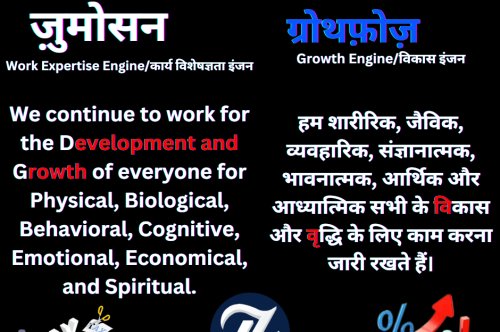8 Best startup valuation Methods of Startups funding

8 Best startup valuation Methods of Startups funding
Startup valuation for a founder is never an easy task. Startup and business valuation on the basis of the sound idea, prototype, high-quality management team, founders, strategies alliance, collaboration, and partnership mechanism do not have a streamlined scientific method, and principles. Startup founders mostly do not have damn sure confidence for their startup value, hence they are not able to put their business and startups to raise the right funding at the right platform or investors. This is the major problem for the startup and business ecosystem. Startups with little or no income or no future profits, the price-giving function is particularly tricky analysis. The established business and, publicly listed businesses with strong profitability and earnings, it is often a matter of seeing them as large amounts of their earnings before interest, tax, depreciation, and amortization (EBITDA) or based on certain industry specifics
Important Issues to be a consideration
-
If you're trying to raise money for your first company, or are thinking of investing in it, it's important to decide if the company is worth it.
-
Startup companies often look to angels or investors to raise the much-needed money to make their business work - but how does one like a new company?
-
Startups are very difficult to tell with accuracy as they do not yet have the money to work or maybe even a salty product, and they will be spending money to get things going.
-
While other methods such as discounted cash flow can be used to inform startups and established firms, other metrics such as double-digit costs and stage placement are unique to new acquisitions.
8 Methods of Startup Valuation measurement
There is the process of valuation of the development phase, which is often used by angel investors and big money firms to quickly come up with a bad and worthwhile list of companies. The "Rule of thumb" values are usually set by investors, depending on the business development stage of the sale. By continuing as the company improves on its development path, it reduces company risk and raises its value. The equilibrium-stage model can look something like this:
1. Equilibrium-Stage Model
|
Estimated Value of the Company |
Developmental Phase |
|
$ 250,000 - $ 500,000 |
When had a strong and sound business idea or business plan |
|
$ 500,000 - $ 1 million |
It has a strong management team that will work on the plan |
|
$ 1 million - $ 2 million |
Has a final product or technology prototype |
|
$ 2 million - $ 5 million |
It has good relationships with partners or customer domain identities |
|
$ 5 million and up |
It has clear indicators of revenue growth and a significant revenue trend |
2.The Berkus Method
|
S.N |
Stage |
Value |
|
1. |
Sound Idea |
$300K |
|
2. |
Prototype |
$500K |
|
3. |
Quality Management Team |
$300K |
|
4. |
Strategic Alliance |
$200K |
|
5. |
Product Rollout or Sales |
$100K |
|
Total pre-Money Valuation |
Max. $2M |
3.Scorecard Valuation Method
|
S.N |
Criteria |
Weight |
Other Funded Company in the same field |
Factor |
|
1 |
Team |
30% |
X |
=0.3X |
|
2 |
Size of opportunity |
25% |
X |
=0.25X |
|
3. |
Product/Technology |
15% |
X |
=0.15X |
|
4. |
Competitive environment |
10% |
X |
=0.10X |
|
5. |
Sales/Marketing |
10% |
X |
=0.10X |
|
6 |
Need for more financing |
5% |
X |
=0.05X |
|
7. |
Other |
5% |
X |
=0.05X |
|
8 |
Total |
Sum of all factors |
4. The Combo Valuation Methos
This the integration valuation method of equilibrium stage valuation, Berkus valuation, and Scorecard valuation method. This is the most suitable method for drafting the unique valuation strategies of business on the new analytical assumptions.
5. The Venture Capital Method
Let we can understand by a case study
Anticipated Exit / Target ROI = Post Money Valuation
$100 M (Divide) / 20X $5M
Amount Invested= Pre-money valuation before adjusting the dilution
$5 - $1 = $4M
Anticipated Dilution 30%
$4M * 70% = $ 2.8 Pre-money valuation
The VC method is a 2-step process that requires several pre-money valuation formulas.
-
First, we calculate the terminal value of the business in the harvest year.
-
Secondly, we track backward with the expected ROI and investment amount to calculate the pre-money valuation.
Calculating terminal value
You need the following figures:
-
Projected revenue in the harvest year
-
Projected profit margin in the harvest year
-
Industry P/E ratio
You can research online to find industry averages for the P/E ratio and projected profit margins.
Once you have your figures ready, use this calculation:
-
Terminal Value = projected revenue * projected margin * P/E
-
Terminal Value = earnings * P/E
E.g. A tech company projects a $10M revenue in 5 years, with a profit margin of 10%. The industry P/E ratio is 20.
So, terminal value = $10M * 10% * 20 = $20M
Calculating the pre-money valuation
For the second step, you need the following:
-
The required return on investment (ROI)
-
Investment amount
Then use this calculation:
-
Pre-Money Valuation = Terminal value / ROI – Investment amount
So, let’s say a pre-revenue investor wants an ROI of 10x on his planned investment of $1M.
In this case, Pre-Money Valuation = $20M / 10 – $1M = $1M
With this method, we can deduce the current pre-revenue startup valuation to be $1M. With an investment of $1M and assumptions about growth and industry earnings, the company could be worth $20M in five years’ time.
6.The Risk Factor Summation Method
|
S.N |
Initial Value |
Risk |
Amount |
Let $1,500,000 |
|
1 |
Management Risk |
Very Low |
+$ 5,00,000 |
$2,000,000 |
|
2 |
Stage of business |
Normal |
- |
- |
|
3 |
Legislation/Political risk |
Normal |
- |
- |
|
4. |
Manufacturing Risk |
Normal |
- |
- |
|
5. |
Sales/Marketing |
Normal |
- |
- |
|
6. |
Funding/Capital rising risk |
Normal |
- |
- |
|
7. |
Competition Risk |
Very high |
-$5,00,000 |
$1,500,000 |
|
8 |
Technology Risk |
Low |
+$2,50,000 |
$1,750,000 |
|
9 |
Litigation Risk |
Very Low |
+$5,00,000 |
$2,250,000 |
|
10. |
International Risk |
Normal |
- |
- |
|
11. |
Reputation Risk |
Very Low |
+$5,00,000 |
$2,750,000 |
|
12. |
Potential Lucrative Exit |
Normal |
- |
- |
|
Box Valuation |
$2,750,000 |
Each of these risk areas will be scored as follows:
-
-2 – very negative (-$500,000)
-
-1 – negative for scaling the startup and carrying out a successful exit (-$250,000)
-
0 – neutral ($0)
-
+1 – positive (+$250,000)
-
+2 – very positive for scaling the startup and carrying out a successful exit (+$500,000)
7. The Assets Based Valuation Method
This method entails a bit of financial juggling:
-
The initial costs of the startup’s assets are offset by impairment costs and depreciation.
-
The total value of physical assets is added to balance sheet values. This includes cash-on-hand and accounts receivables.
-
Any outstanding debts or expenses will be subtracted from the total to give you the asset-based valuation.
8. The Cost- To- Duplicate Method
In this method, you assess the physical assets of the startup and then figure out how much it would take to duplicate the startup elsewhere. No savvy investor would invest more than the market value of the assets, so it’s useful to know this when looking for pre-revenue investors.
|
S.N |
Stage |
Investors |
Valuation |
|
1 |
Concept/Business Plan |
Self or Friends & Family |
$250K to $ 1M |
|
2. |
Technology Developed |
Angel. Seed VCs |
$1M to $ 5M |
|
3. |
Launch /Early customer traction |
Seed VC, Series A, VC |
$5M to $15 M |
|
4. |
Scaling and adoption(Cash flow positive) |
Series A/B/C, VC |
Huge Variability $ 15 M to $ 30 M (With outliers to $100M) |
|
5 |
Rapid/MassExpansion (Cash Flow Positive) |
IPO or exist (Public co. , or strategic acquire |
Huge Variability $ 100 M to $ 1 B (Avg. IPO $500M |
The overall conclusion of startup and business valuation basically depends on the investor analytics team as well as startup/business founder management future analytic prediction approach.
Bottom Line
It is very difficult to find the right value for a startup and company while it is in its infancy phase as its success or failure remains always unknown. There is a saying that startup measurement and valuation is more art than science. There is a lot of truth to that. However, the methods we have seen help make art more scientific. let Zumosun help you organize your startup/ business valuation methods, so your business can grow faster and make more accurate decisions. Save time and plan for the future of your business. Visit us on Zumosun or TheLegalBank or contact on 9116098980








Prakash Chand Sharma
Excellent rich valuation content
6 years ago
admin
Excellent analysis of the valuation approach. It will help to us for the valuation of our startups
6 years ago
admin
Excellent explanation
6 years ago